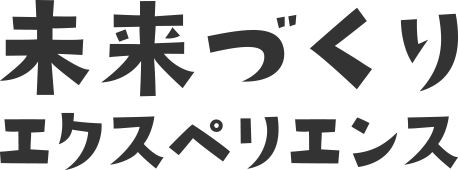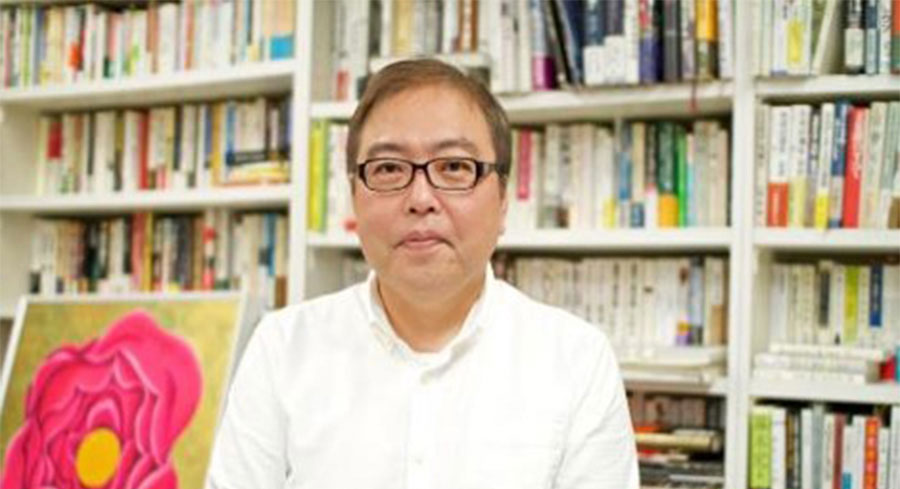



Sustainable approach and awareness of symbiosis with the earth and nature are urgent issues in today’s society. On the other hand, Japan, being an island nation, has long been deeply rooted in sustainable lifestyles and concern for the environment. In addition, the reverence for the eight million gods (Yaoyorozu-no-kami), who are believed to inhabit all things, has led to a spirituality of respect for the natural environment and acceptance of various deities. The Kunisaki Peninsula in Oita Prefecture has a history that stretches back more than 1,000 years, and the culture and traditions that have been built up in this region embody the sprit of sustainable symbiosis. By visiting shrines and temples with Shinto and Buddhist practices, the unchanging nature, and the Japanese mountain asceticism, visitors can deepen their understanding of sustainable living and find hints for the future by experiencing history and spirituality of the region.

The Kunisaki Peninsula, located in the northeast of Kyushu, flourished as a trading place with the Mainland China and the Korean Peninsula in ancient times and home to a sustainable "spirit of symbiosis" that has been handed down for more than 1,000 years. In this place, natural faith in which the worship of eight million gods and Shinto-Buddhist syncretism, have taken root, and these spirits are deeply connected to the culture and traditions of the region. The journey around the Kunisaki Peninsula begins at Usa Jingu Shrine, which is believed to be the place where the syncretism of Shintoism and Buddhism began. This tour then continues to Kumano Magaibutsu, the largest stone Buddha in Japan that blends in as part of nature, Itsutsuji Fudo Temple, where people visit as a place of ascetic practice, and Futagoji Temple, the center of Rokugo Manzan, and other sacred sites where Shintoism and Buddhism live together with nature. You will also visit "Tashibu-no-Shou", once the manor of the Usa Jingu Shrine, and experience sustainable farming practices that utilize natural cycles.
The "symbiosis" with nature and the "symbiosis" with gods and Buddha that continues on the Kunisaki Peninsula will be expressed as "Rokugo Mansan", which is still rooted in the spirit of the people and will continue into the future. And through this program, you will experience this "symbiosis". We hope that a trip to the Kunisaki Peninsula will provide insight into a sustainable way of life in a place where history and nature are in harmony.

On the Kunisaki Peninsula, a sustainable "spirit of symbiosis"and the belief in nature that begins with eight million gods, which have been handed down for more than 1,000 years. Furthermore, there is the syncretism of Shinto and Buddhism and "Rokugo Manzan Culture" that represents the activities of the people of this region.
A curator will guide you while you visit cultural properties and exhibits and this visit will increase the anticipation of the tour by providing an outline of the journey that is about to begin.


Usa Jingu Srine is a shrine located in Usa City, Oita Prefecture. It is the head shrine of Hachiman Shrine, which has approximately 44,000 shrines, the largest number in Japan, and has a history of 1,300 years. Before the separation of Shintoism and Buddhism, the temple was officially called Usa Hachimangu Mirokuji (Usa Hachiman Shrine Miroku Temple), which was combined with Mirokuji (shrine-temple) and is a valuable place that is said to be the place where syncretism of Shinto and Buddhist begun. At Usa Jingu Shrine, under the guidance of a guide, you will tour Usa Jingu Shrine, including the characteristic Otorii (grand gate), and the unique worship etiquette of two bows, four claps, and one bow.


Trekking along the path of Rokugo Manzan Mineiri (Rokugo Manzan Pilgrimage and Rituals), an ascetic practice that has been practiced on the Kunisaki Peninsula since ancient times. Along the way, you will encounter many hidden stone cultural properties and nameless Buddhas and walk with your guide through the original scenery or Japanese faith. Paticulary noteworthy is "Itsutsuji Fudo Temple", which rises as if it were clinging to the surface of Mount Fudo. It is a place of prayer at the Rokugo Manzan Scared Site, located on the route of the once-in-a-decade Mineiri pilgrimage.
Built on a rock face at an elevation of 365 meters, the temple offers a spectacular view not only of Himejima Island, but also of Yamaguchi Prefecture in the distance on a clear day.


Futagoji Temple is located in the center of the Kunisaki Peninsula and was built halfway of Mount Futago. This temple is celebrating its 1,300th anniversary and is known as the main temple of Rokugo Manzan. Since the Edo period (1603 – 1867), it has overseen the entire Rokugo Manzan and served as the fundamental dojo (training hall) for mountain ascetic practice. The sprit of the mountain worship in harmony with nature is deeply rooted here, and visitors can deepen their spiritual practice and faith in the mountain in peace and quiet. You will hear from the chief priest about the sustainable people's activities and faith that has continued for more than 1,000 years while protecting the forests, rivers, and village surrounding the shrine.


A Magaibutsu is a stone Buddha carved into rock wall. Taking advantage of its rich natural landscape, Kunisaki has many Magaibustu. In particular, the Kumano Magaibutsu in Bungo Takada City is one of the largest ancient Magaibutsu in Japan, created in the late Heian period (794-1192) and is protected as a nationally designated important cultural property. It has maintained its powerful appearance despite being exposed to the wind and rain for more than 1,000 years, blending in with its surrounding and even feels a sense of unity with nature. Kumano Shrine is quietly located behind Kumano Magaibutsu, and you can experience the depths of the Shinto-Buddhist syncretism at this place.


Tashibu manor was once the manor of Usa Jingu Shrine and a valuable place in Japan where the scenery has remained unchanged for 1,200 years. You will be healed by nature while looking at the same scenery as people in the past. Visitors can take a walk surrounded by the sounds of nature, such as the chirping of the birds and the murmuring of the river. Through this experience, you will be able to enjoy the original Japanese landscape and at the same time calm your mind in a lush green.
In the surrounding area, the elements that symbolize Usa’s World Agricultural Heritage are spread out. The walking course is designed to give visitors a sense of the agricultural cycle that includes oak forests, "hodaba"(log laying yard for Shitake mushrooms cultivation), and reservoirs etc. Please enjoy the beautiful natural surroundings while learning about the importance of the environment.


Dinner at Tashibu manor offer a special culinary experience, enjoying the blessing of local nature and locally grown food while being surrounded by sounds of nature and a landscape that has remained unchanged for 1,200 years.
The "manor rice" made at Tashibu manor has a unique flavor produced by the region's distinctive climate and natural features and is the rice that evokes a sense of history and tradition. Shitake mushrooms, which are products of World Agricultural Heritage, and "Bungo rice-finished beef" raised on feed rice produced in Oita Prefecture, will also be used, and you will fully enjoy local specialty products. The dishes carefully prepared by the people of Tashibu manor will give victors a special food experience, with sense of local flavor and affection of the people there.

| A journey around Kunisaki Penisula, where sustainable "sprit of symbiosis" has rooted for over 1,000 years | ||
| Dates | TBA | |
| Days | 2 days | |
| Number of meals | Day 2: Lunch 1 / Dinner 1 | |
| Schedule | ||
| 1 |
Around 12:00 Gather and depart from your hotel (around Beppu) | Travel by private vehicle 13:00 – 13:30 [Viewing] Oita Prefectural Museum of History / Fudoki no Oka | Travel by private vehicle 14:00 – 15:30 [Experience] Usa Jingu Shrine guided tour | Travel by private vehicle 16:30 – 17:30 [Experience] Minemichi trekking Itsutsuji Fudoson | Travel by private vehicle Around 19:00 Return to Hotel *Note: Dinner is not included on the first day. Please dine at your leisure. |
|
| 2 | Day 2 |
Around 8:30 Gather and depart from your hotel (around Beppu) | Travel by private vehicle 9:45 – 11:50 [Experience] Futagoji Temple Zazen/Gomado ~ Okunoin Guide | Travel by private vehicle 12:00 – 13:00 [Lunch] Futagokawaraza (Soba) | Travel by private vehicle 13:30 – 15:00 [Experience] Kumano Magaibutsu Trekking | Travel by private vehicle 15:30 – 17:00 [Experience] World Agricultural Heritage walk Tashibu no Shou (Tashibu manor) | Travel on foot 17:00 – 17:30 [Experience] Shouen-mai (manor rice) Kamado Cooking Experience | No movement 17:30 – 19:30 [Experience] Premium diner | Travel by private vehicle Around 20:30 Return to Hotel / Disband |
| Price | 180,000 yen (tax included) per person | |
| Included in the price | Transportation in a private vehicle, meal costs, guide fees, experience fees, facility usage fees. | |
| Not included in the price | Transportation costs from your home to the gathering and disbanding points, accommodation fees including tax & service charges. | |
| Payment of travel fee |
Once the booking is confirmed based on your application details, we will send reservation confirmation and billing by email. Payment can be made by credit card (VISA / MASTER) or bank transfer. Please confirm your departure date, return date, tour details, traveler's name etc. and make payment within 10 days of booking. *If the payment due date falls on a non-business day, payment must be made by the previous business day. *Bank transfer fees are to be borne by the customer. |
|
| Changes & Cancellations | Please request changes or cancellations by email or phone. Cancellation after arrangement completion is subject to the following cancellation fees: 20% of the travel cost from 20 days prior to the start date 30% from 7 days prior 40% on the day before 50% on the day of departure 100% after departure or in case of no-show without contact |
|
| Capacity | 8 people If the minimum number of participants is not reached, the tour may be cancelled. In such a case, we will notify you of the cancellation by e-mail at least 20 days prior to the start of the tour. The full amount of the tour fee received from the customer will be refunded. |
|
| Minimum Participants | 4 people If the minimum number of participants is not met, the trip may be canceled. In such cases, you will be notified at least 20 days before the scheduled departure date by written notice, phone, or email, and a full refund will be provided. |
|
| Condition of participants | - Preschool children are not allowed to participate. Additionally, since alcohol will be provided on this tour, those under the age of 20 must be accompanied by a guardian (alcohol will not be provided to those under the age of 20). - People staying in the Beppu area. |
|
| Booking Deadline | Up to 1 days before the departure date | |
| Travel Terms | Please confirm the travel terms and conditions before applying. Travel Terms and Conditions for Domestic Solicited Package Tours |
|